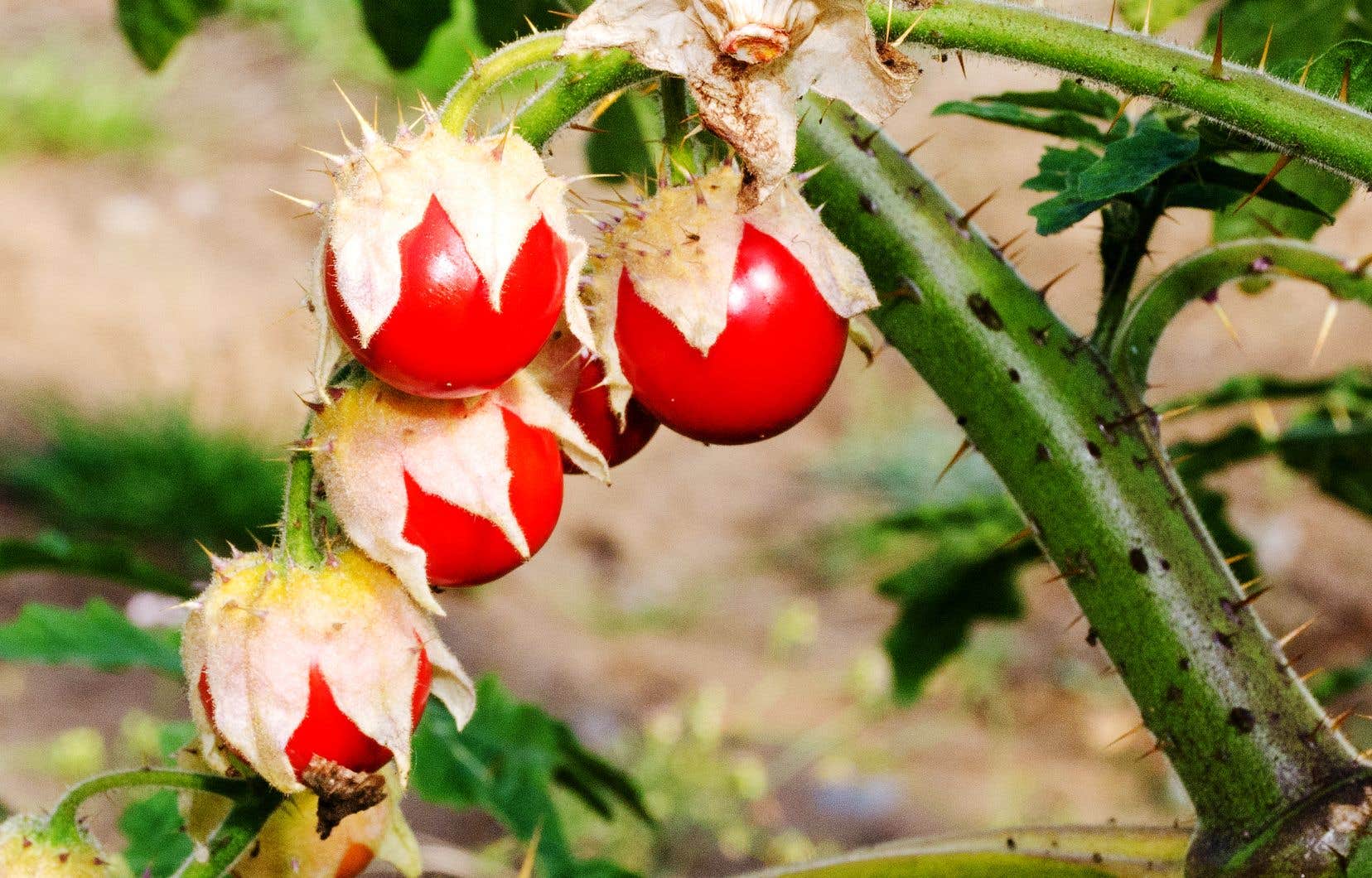This text is part of the special book Plaisirs
Discovering new flavours, preserving biodiversity, designing a vegetable garden that is out of the ordinary… there are only good reasons to diversify your seedlings. Here are five species you won’t even find at the grocery store to include in your indoor seedlings until spring comes.
1. Balbis Nightshade (Solanum sisymbriifolium)
From its height of 1.5 meters, the Balbis nightshade fascinates every time. Covered with thorns over its entire surface (yes, the stems, the leaves and even the fruit envelope), it offers slightly tangy and sweet fruits. These have the appearance of tomatoes, but their taste is more like that of lychee. To harvest, we wait for the spiny envelope to open on its own and expose its small round fruit.
• Sowing: on the surface, from 26 to 30°C
• Sprouting: 14 to 30 days, 3e week of march [1]
• Transplanting: 4e april week
• Transplantation in the garden: 1D week of june
• Culture : Plant of sun whose culture is similar to that of tomatoes. A tutor can help in its development.
• Harvest : 90 days after transplanting to the garden. Beware of thorns!
• Conservation : Fruit will keep for a week in the refrigerator.
2. Pink stem celery (Apium graveolens)
Tired of the traditional green celery? Try its brightly colored cousin, pink stalk celery. Eaten raw, it has a more pronounced taste, but it becomes tender and sweet when cooked. In addition to its original appearance and taste, this variety is known to be easy to grow.
• Sowing: on the surface, from 15 to 20°C
• Sprouting: from 7 to 20 days, 2e week of march [1]
• Transplanting: 3e april week
• Transplantation in the garden: 3e May week
• Culture : sun plant tolerant of some shade. Celery loves water!
• Harvest : 90 days after transplanting to the garden
• Conservation : Stems will keep for up to a week in the refrigerator.
3. Malabar spinach (basella rubra)
Adorned with mauve-red stems and pink flowers, Malabar spinach amazes. We eat its leaves sautéed in a pan, just like our traditional spinach (from where it gets its name). Of tropical origin, the plant can reach up to two meters in height in hot and humid climates. In Quebec, its size will remain more modest.
• Sowing: 1 cm deep, 26 to 30°C
• Sprouting: from 7 to 20 days, 3e week of march [1]
• Transplanting: 3e april week
• Transplantation in the garden: 1D week of june
• Culture : Sun plant that needs a stake. It can easily flourish in a large container.
• Harvest : 50 days after transplanting to the garden
• Conservation : The leaves will keep for 2 to 5 days in the refrigerator. Harvest only what you need!
4. Yellow nutsedge (Cyperus esculentus var. satisfied)
Nicknamed earth almond, the yellow nutsedge tuber is a real delight. Beneath its wrinkled appearance lies smooth flesh with a taste reminiscent of coconut. It is eaten raw, cooked, grilled and even… as a vegetable drink! For careful horticulturists, have no fear, this plant has an annual life cycle in Quebec and therefore cannot become invasive.
• Sowing: 2 to 3 cm deep*, 21 to 27°C
• Sprouting: from 20 to 60 days, 1D week of march [1]
* Soak seeds in water for 24 hours before sowing. Germination is spread over time.
• Transplanting: 2e april week
• Transplantation in the garden: 3e May week
• Culture : Sun plant that prefers cool, loose, light, humus-rich soil.
• Harvest : 120 to 125 days after transplanting to the garden. Using a spade fork can help.
• Conservation : For fresh consumption during the first weeks after harvest, keep the tubers in a cool place. For extended storage of up to several months, dry the tubers and store them in an airtight container.
5. Hibiscus roselle (Hibiscus sabdariffa)
Both a delight for the eyes and for the stomach, roselle is known for its soothing properties. Its pretty red chalices can be consumed as an infusion, but they are also used to produce several drinks, such as lemonade vodka. With its green leaves lined with red, this aromatic plant finds its place in the landscaping of many gardeners.
• Sowing: 1 cm deep, 21 to 27°C
• Sprouting: from 5 to 12 days, 1D week of march [1]
• Transplanting: 2e april week
• Transplantation in the garden: 2e week of june
• Culture : A sun plant, the hibiscus roselle particularly likes soils rich in organic matter.
• Harvest : 110 days after transplanting to the garden. Harvest the fleshy fruits (called calyxes) and dry them in the oven, dehydrator or in the sun if the temperature allows it.
• Conservation : Once dried, the fruit can be kept for several months.
[1] All dates refer to hardiness zones 5 and 6. For hardiness zones 3 and 4, you only need to add two weeks to the calendar given. For example, a seedling planted in the first week of February in zones 5 and 6 will rather be carried out at the end of February in zones 3 and 4.
This special content was produced by the Special Publications team of the Duty, pertaining to marketing. The drafting of Duty did not take part.
